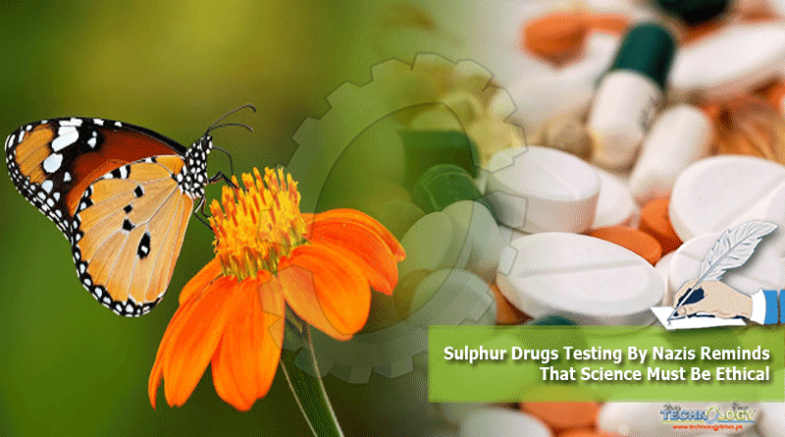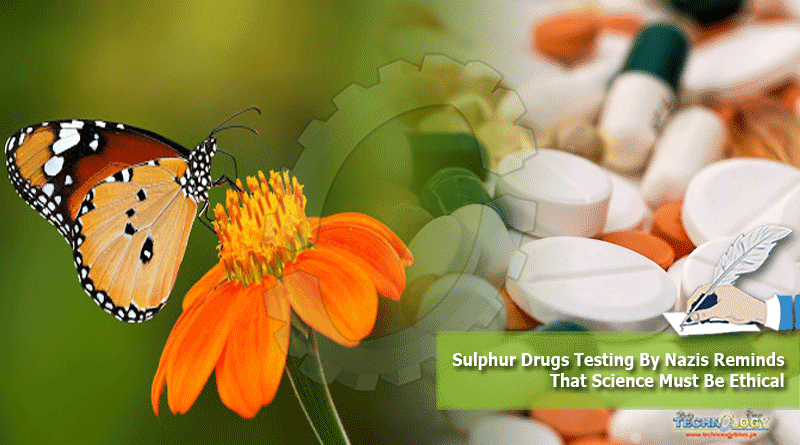So Elated Was The Normally Undemonstrative Dr Norman Heatley When He Left The Lab At 3:45am That He Burst Into Song, Sulphur Drugs

As the scientist rode his bicycle through the ancient streets of Oxford he was stopped by a member of the Home Guard, whom he had to persuade of his sobriety before continuing on his way. It was 26 May 1940: the UK’s position had never been so precarious, its army stranded on the beach at Dunkirk under German assault. Sulphur Drugs
The following morning, Heatley returned to the Dunn School of Pathology in Oxford to meet his colleagues and report the stunning results behind his ebullience. Four mice carrying a bacterial infection treated with a new drug the scientists had been testing had survived, while the untreated mice had died. The discovery of penicillin is a quintessential story of English improvisation and grit. So much so, that when the Nobel committee of 1945 selected the winners of the prize for physiology or medicine, Heatley, the discovery’s leading Englishman, was overlooked. The accolades were instead divided between a Scotsman, an Australian and a German refugee.
The Scotsman, Alexander Fleming, was born in Ayrshire in 1881 but moved to London to study medicine. It was there, at St Mary’s Hospital in 1928, that he discovered penicillin. An element of luck was involved; he’d left the lid off a bacterial culture-dish he’d been working with before leaving on holiday. When he returned he found a fungus had landed on the dish and lysed the bacteria in its proximity. Fleming had been seeking anti-bacterial agents for years and was quick to investigate precisely how the fungus killed bacteria. But lacking the chemical skills needed to elucidate the antibiotic, he abandoned the work. Sulphur Drugs
It was revived by Ernst Chain, a Jewish man who had fled Germany immediately following Hitler’s assumption of power in 1933 and now worked at Australian pathologist Howard Florey’s lab in Oxford. Chain was shunted between universities before the pivotal move to Oxford. Having endured the worst horrors of anti-Semitism in Germany – his mother and sister both died in concentration camps – he was perpetually wary of discrimination in Britain too. Furious with the British scientific authorities that financial support for his research wasn’t more forthcoming, Chain once railed: “It would all be different if only I played cricket.” Chain was an irascible and difficult man. Heatley struggled to get along with him as they worked together to characterise penicillin. “We were temperamentally incompatible,” said the mild-mannered Englishman, who never once complained about being overlooked for the Nobel Prize.
Florey, according to one biographer, was “a rough, tough Australian. Completely uncompromising, rather prickly, very energetic and tense as a coiled spring.” But he was able to read people and build a brilliant team. Florey came to Oxford as a Rhodes Scholar in 1921 and returned after working elsewhere in 1935, bringing Chain and Heatley into his team, and first working on other antibacterial agents before turning to penicillin in the late 1930s, as war loomed in Europe. Sulphur Drugs
The cell biologist Henry Harris, who succeeded Florey as head of the Dunn School, succinctly summarised the respective standing of the penicillin team: “Without Fleming no Florey or Chain, without Chain no Florey, without Florey, no Heatley, without Heatley, no penicillin.”
Having shown mice could be cured, Florey sought terminally ill individuals who, once the risks had been explained to them, would help demonstrate penicillin was harmless to people. A woman with terminal cancer survived taking it, albeit with a fever linked to impurities that had to be removed before he could treat the first patient, police constable Albert Alexander.
According to popular legend, Alexander received a cut while pruning his roses, which caused bacterial sepsis. But his daughter, Sheila, whom I spoke to a few years ago, recalls Alexander’s illness starting with a minor wound acquired while seconded to Southampton during the Blitz in December 1940. Whatever the cause, he was close to death by the time he was treated. Multiple doses were needed as the original formulation of penicillin was rapidly cleared by the body in urine. In spite of this, the patient’s recovery was remarkable, although, tragically, the drug eventually ran out, and he relapsed and died. Sulphur Drugs
The temporary reprieve, however, convinced the penicillin team that a cure was possible, if only enough of the drug could be made. Florey and Heatley then visited the US, where they persuaded several large pharmaceutical companies to scale production to levels that, by the end of the Second World War, were allowing thousands of Allied soldiers to survive battlefield wounds.
Meanwhile, German scientists in the 1930s had been experimenting with selected textile dyes that revealed antimicrobial properties. Bacteriologist Gerhard Domagk had shown that one such red dye, Prontosil, based on sulphur, could kill bacteria. When his daughter Hildegard, aged six, fell ill with sepsis having pricked herself with a needle, Domagk treated her with Prontosil. She was cured. This triggered a major rise in the medical testing of similar sulphur-based dyes. Domagk was awarded the Nobel Prize for medicine for his work in 1939, but was arrested by the Gestapo for accepting. Germans had been banned from taking the prize after Carl von Ossietzky, an anti-Nazi pacifist, received the peace prize in 1935. Under duress, Domagk declined the prize but was allowed to retrieve it in 1947.
The Nazis, of course, wanted antibacterial agents to enhance their ability in warfare. In 1942 they initiated trials to test sulphur drugs against gangrene, a common bacterial cause of death in war. Instead of testing the drugs on soldiers injured on the battlefield, or pursuing an ethical approach through controlled trials, they embarked on a sickening set of experiments of unthinkable barbarism. Sulphur Drugs
In the concentration camp of Ravensbrück in northern Germany, dozens of female prisoners, mainly Polish women, dubbed “the rabbits” by their SS guards, were taken for human experimentation. Gashes were slit into their skin, often going deep into muscle, before gangrene-causing species of bacteria were inoculated. The experimenters would mix soil, sawdust and shards of broken glass into the wounds to better mimic battlefield wounds, before sewing them up and testing the sulphur drugs. The pain inflicted was excruciating and many of the women died.
Some survivors were reused in other, even more grotesque experiments. Muscles were excised from different anatomical sites to see if they could regenerate. Other prisoners had arms or legs removed in futile attempts at whole limb transplantation. Most of those who did not die of trauma or subsequent infection were shot.
It seems abject cruelty was at the heart of the mission of the “doctors from hell” as US journalist Vivien Spitz calls the perpetrators in her book of that name. Churchill, in his famous “finest hour” speech, alluded to the “lights of perverted science” shone by the Nazis. Even he, however, was unaware of how sickening things were to become in the concentration camps.
Ultimately, the British, with help from the Americans, brought penicillin to practical use in the war by late 1943. The sulphur drug programme in Germany failed and infected Allied troops were able to recover more quickly than their German counterparts. Winning the race to produce antibiotics undoubtedly helped the US and the UK to win. The different ways of running that race serves as a lesson today as the world seeks a Covid-19 vaccine. Science can better our society and our world, but the ends can never justify the means. Science should be ethical, not perverse.
This news was originally published at newstatesman.com
